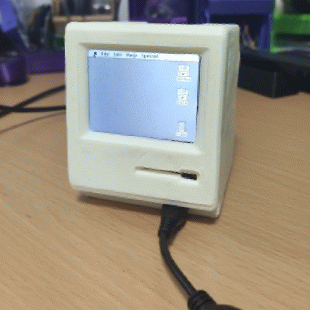mirror of
https://github.com/likeablob/macmini.git
synced 2025-08-13 01:24:56 +00:00
master
Mac(intosh) mini
Build Instruction
- Print the outer shell.
- PLA, 0.2 mm, 180 ℃ (See also ./openscad/README.md)
macintosh-mini-part-a.stl(stl)macintosh-mini-part-b.stl(stl)

- Setup your Orange Pi Zero Plus 2 (H3)
- Install Armbian Bionic. https://www.armbian.com/orange-pi-zero-plus-2-h3/
- Then SSH into the device.
$ sudo apt install -y git tightvncserver
# Install Node.js
$ git clone https://github.com/tj/n /tmp/n && cd /tmp/n && sudo make install
$ sudo n v10
# Install https://github.com/xpertsavenue/WiringOP-Zero
$ cd ~/
$ git clone https://github.com/xpertsavenue/WiringOP-Zero
## Please refer to https://github.com/xpertsavenue/WiringOP-Zero
# Enable SPI1 interface
$ sudo vi /boot/armbianEnv.txt # or use armbian-config
! overlays=spi-spidev analog-codec usbhost2 usbhost3
+ param_spidev_spi_bus=1
# Setup vncserver
$ mkdir ~/.vnc
$ vncpasswd ~/.vnc/passwd
# Install the dependencies & config files
$ git clone https://github.com/likeablob/macmini ~/macmini
$ cd ~/macmini
$ sudo ./install.sh
# Copy your assets
$ cp /path/to/vmac.rom ~/macmini/minivmac/vMac.ROM # Mini vMac ROM file
$ cp /path/to/vmac.dsk ~/macmini/minivmac/system.dsk # Mini vMac disk file
$ cp /path/to/.basilisk_ii_prefs ~/.basilisk_ii_prefs # Basilisk II config file
$ cp /path/to/macboot.wav ~/macmini/macboot.wav # Boot sound (optional)
# Reboot to apply the settings
$ sudo reboot now
# Select LineOut as the default sink
$ pacmd list-sinks | grep -e 'name:' -e 'index:'
index: 0
name: <alsa_output.platform-1c22c00.codec.analog-mono> # LineOut
* index: 1
name: <alsa_output.platform-soc_sound.stereo-fallback> # HDMI
$ pactl set-default-sink 0 # or use `DISPLAY=:1 pavucontrol` and `alsamixer` to adjust volume
-
[Tips]: Here is my working .basilisk_ii_prefs.
-
Wire the display & USB boards to the OPi
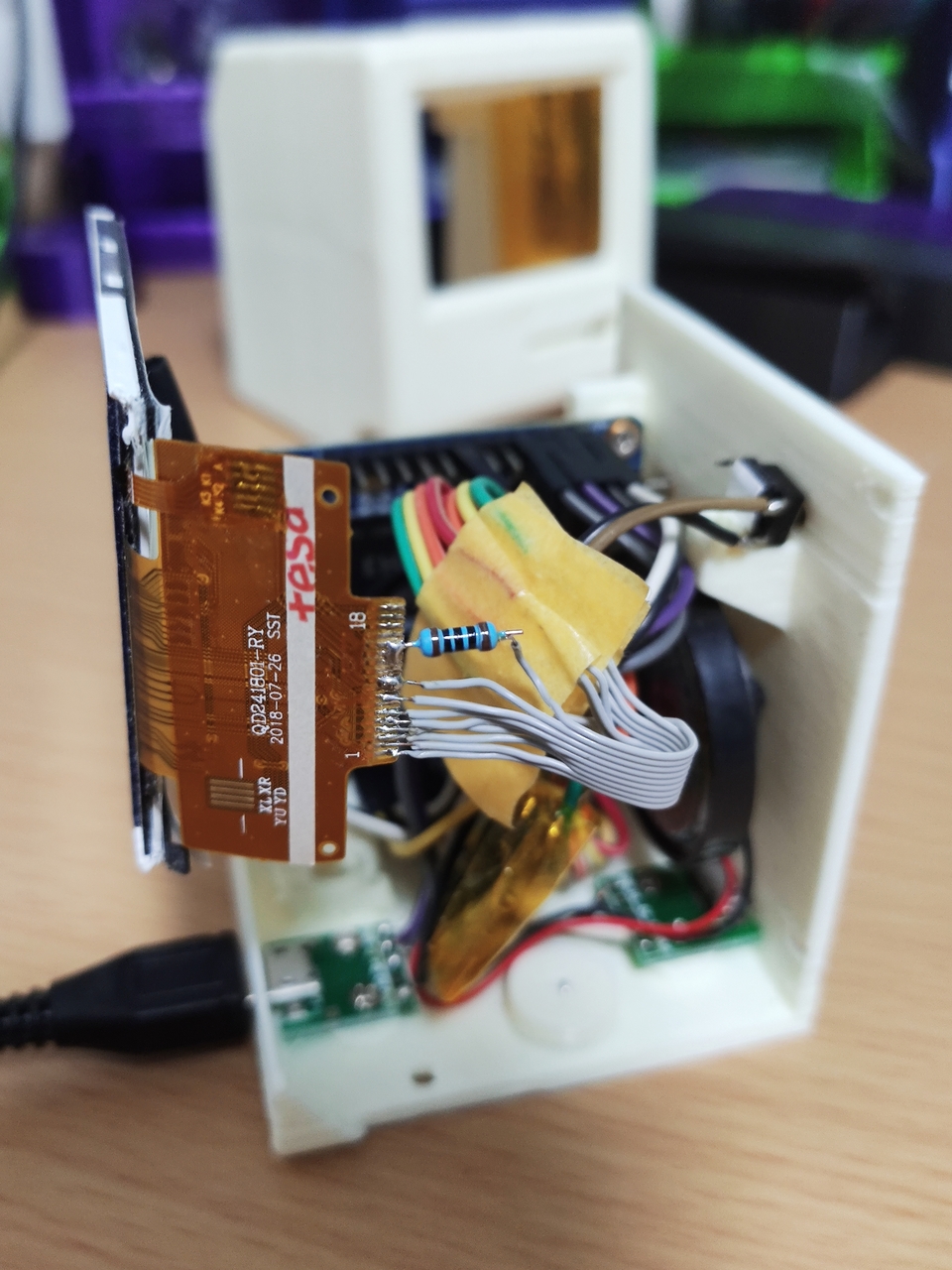
| OPi | Peripherals |
|---|---|
| PA15/SPI1_MOSI | LCD MOSI |
| PA16/SPI1_MISO | LCD MISO |
| PA14/SPI1_CLK | LCD CLK |
| PA13/SPI1_CS | LCD CS |
| PS12 | LCD RESET |
| PA11 | LCD DC |
| PA06 | Push Switch |
| GND | Push Switch |
| USB-DP2 | USB (Front) Data+ |
| USB-DM2 | USB (Front) Data- |
| 5V | USB (Front/Rear) 5V |
| GND | USB (Front/Rear) GND |
| LINEOUTL | (Optional) Amplifier Input |
- [Tips]: Pinout can be found below.
- OPiZero
- LCD (Note that there might be some variants.)
Basic Concepts
- At system boot,
fbtft_devicekernel module is loaded and it initializes the LCD as/dev/fb0. nodmstarts an X session and~/.xinitrcget executed.~/.xinitrclaunchsmatchbox-window-managerand~/macmini/switcher/*js.~/macmini/switcher/index.jsreads the scripts~/macmini/switcher/sh.d/*shand spawns them one by one when there is a HTTP GET request atlocalhost:5501/.~/macmini/switcher/gpio-reader.jswatchs the push SW at GPIO7(PA06) and send a request tolocalhost:5501/.
How does the low-res LCD(320x240) handle 512x384 resolution?
Internally tightvncserver and ssvncviewer are used to scale the display.
- e.g.
1_large_minimac.shlaunches:tightvncserverto create a virtual display (512x384) atDISPLAY=:1(:5901)minivmacinDISPLAY:1ssvncviewer -scale 0.625inDISPLAY:0(By the-scaleoption, low-res LED get upscaled)
Gallery
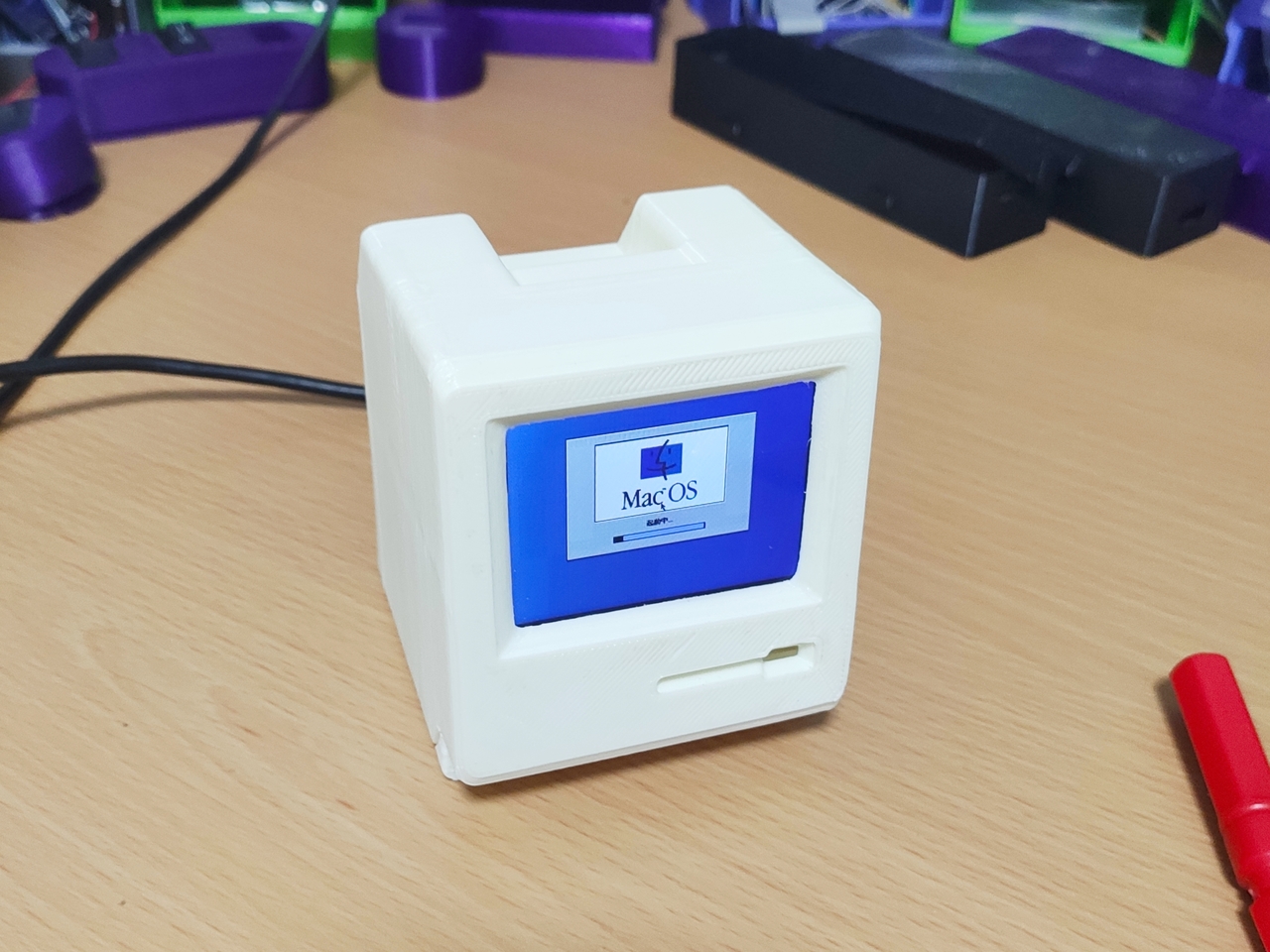 |
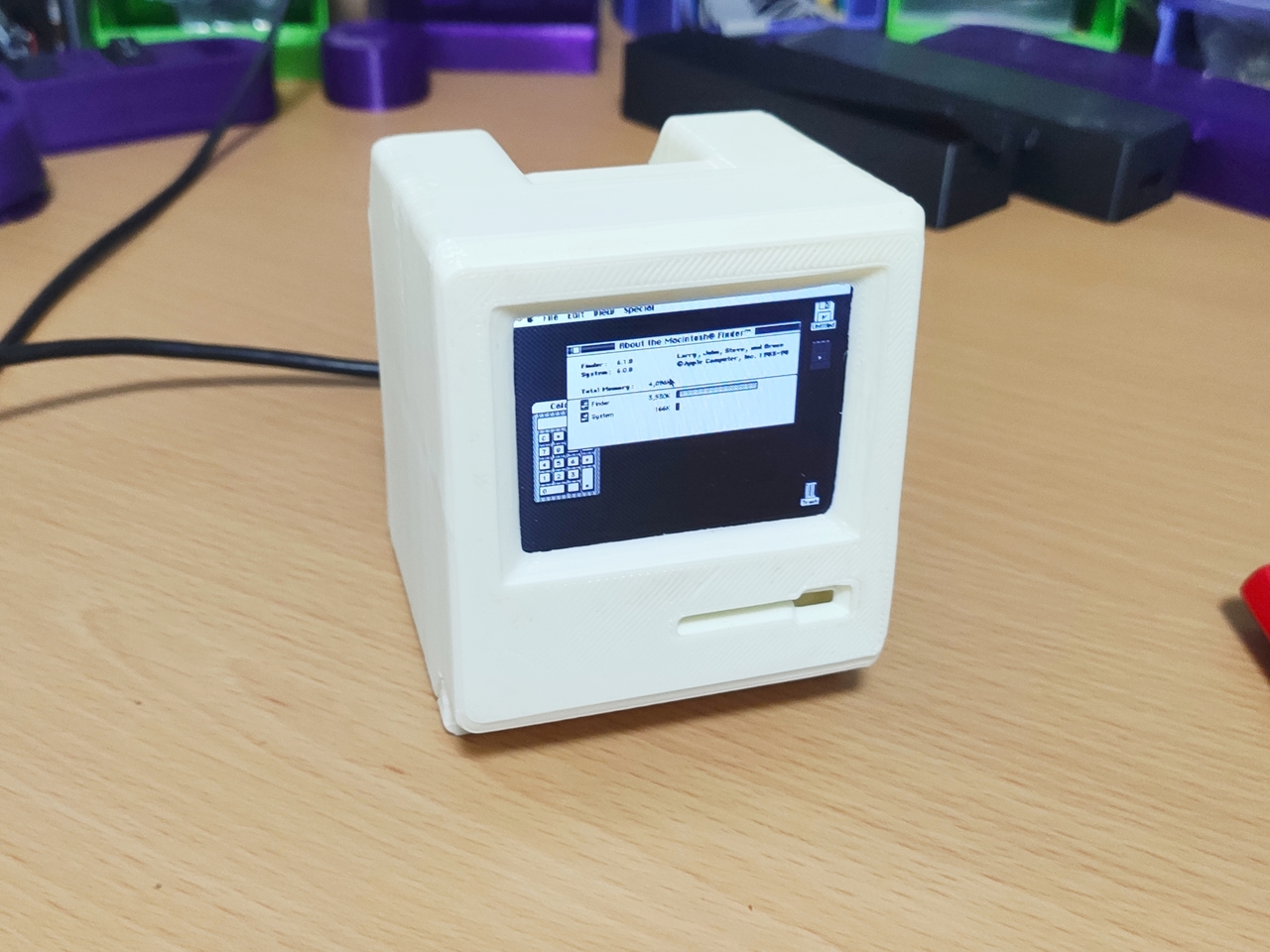 |
|---|---|
 |
 |
 |
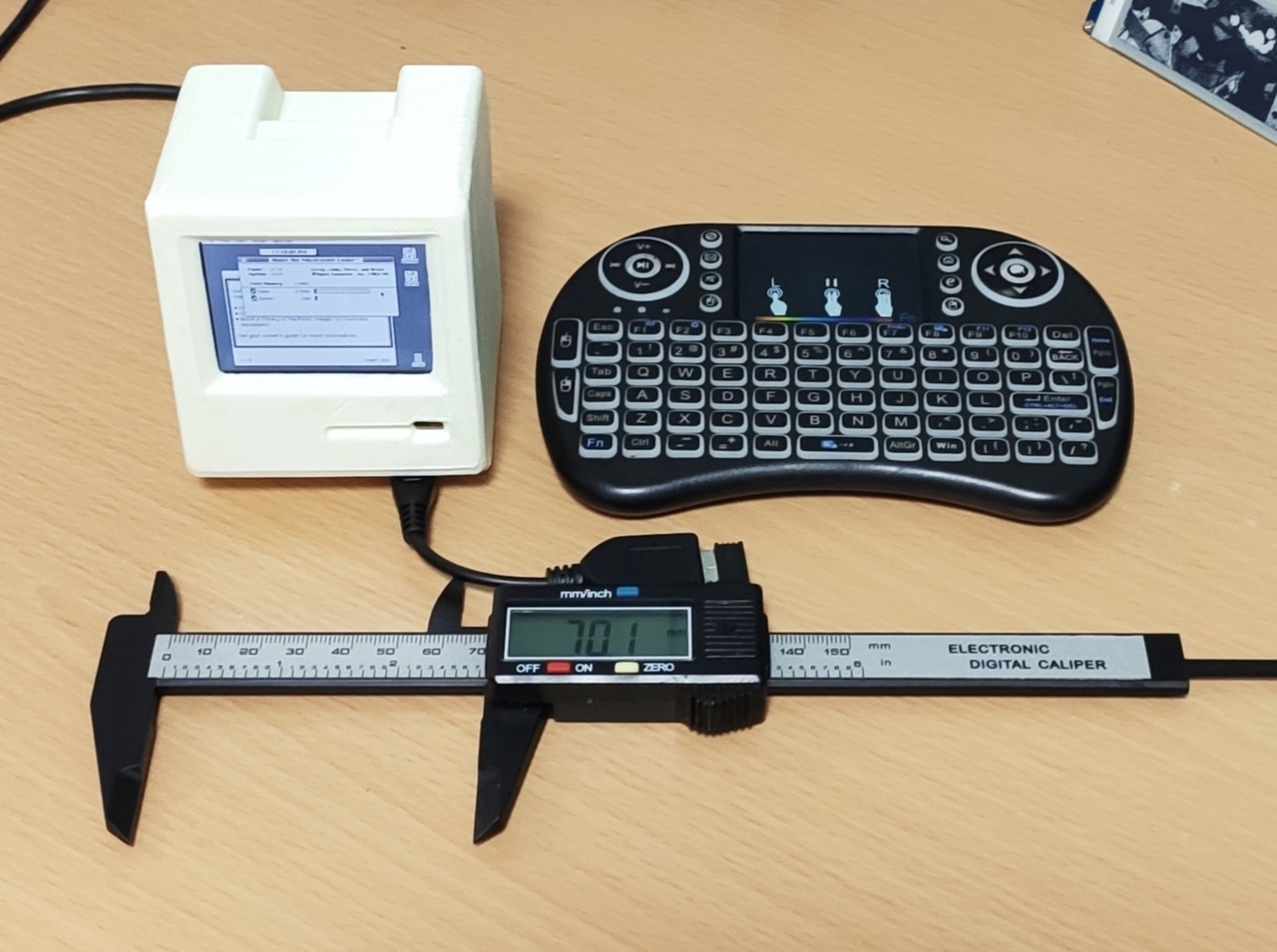 |
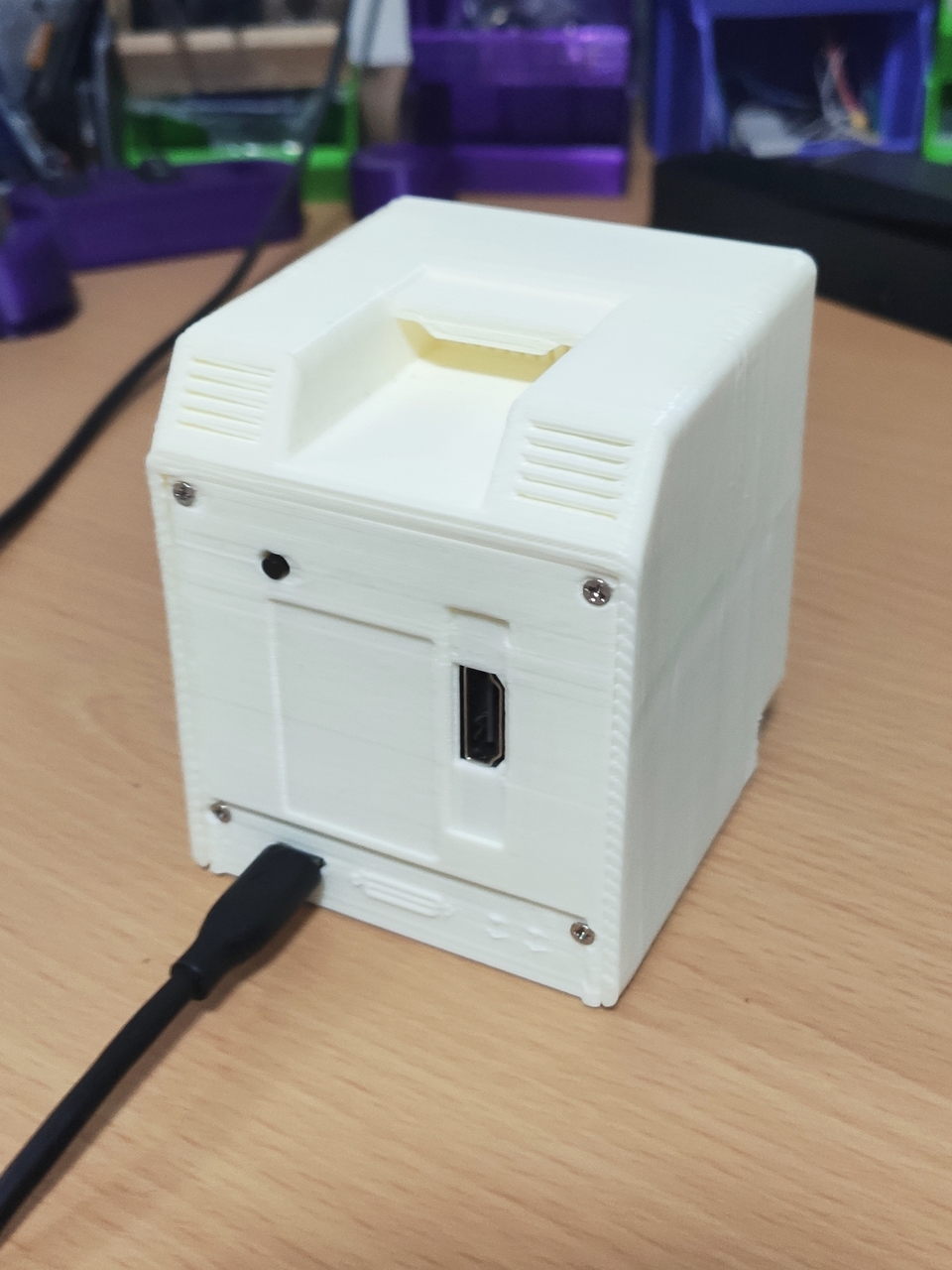 |
 |
BOM
| Name | Quantity | Descriptions |
|---|---|---|
| OrangePi Zero Plus 2 (H3) | 1 | H5 ver. might work too. |
| 2.4inch SPI Display (ili9341, 320x240, with flat cable) | 1 | |
| Generic micro-USB Breakout Board | 2 | |
| M2 x 6 mm Self Tapping Screw | 16 | |
| D10mm Rounding Magnet | 2 | |
| 7x7 mm Push Switch | 1 | |
| 2W Small Speaker | 1 | (Optional) |
| ClassD Audio Amplifier Board | 1 | (Optional) PAM8403 |
Acknowledgments
- Mini vMac https://www.gryphel.com/c/minivmac/
- Basilisk II https://basilisk.cebix.net/
- Kudos to all the devs!
Languages
OpenSCAD
76.8%
Shell
10.1%
JavaScript
10%
Makefile
3.1%
